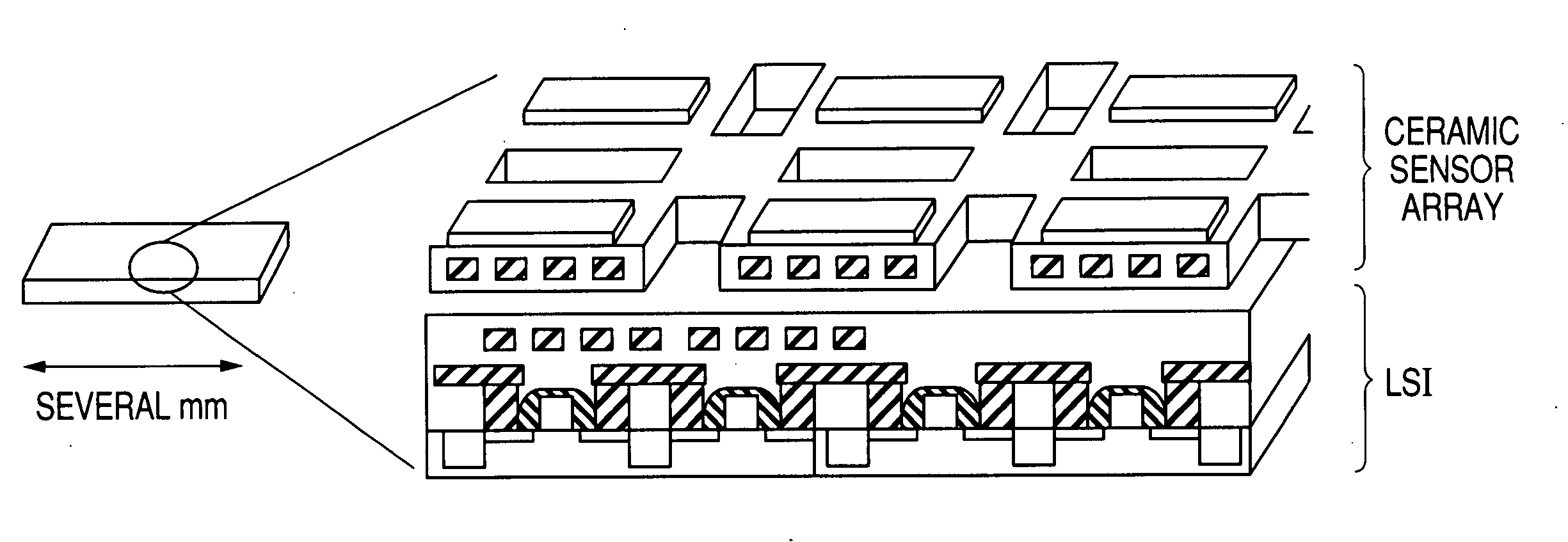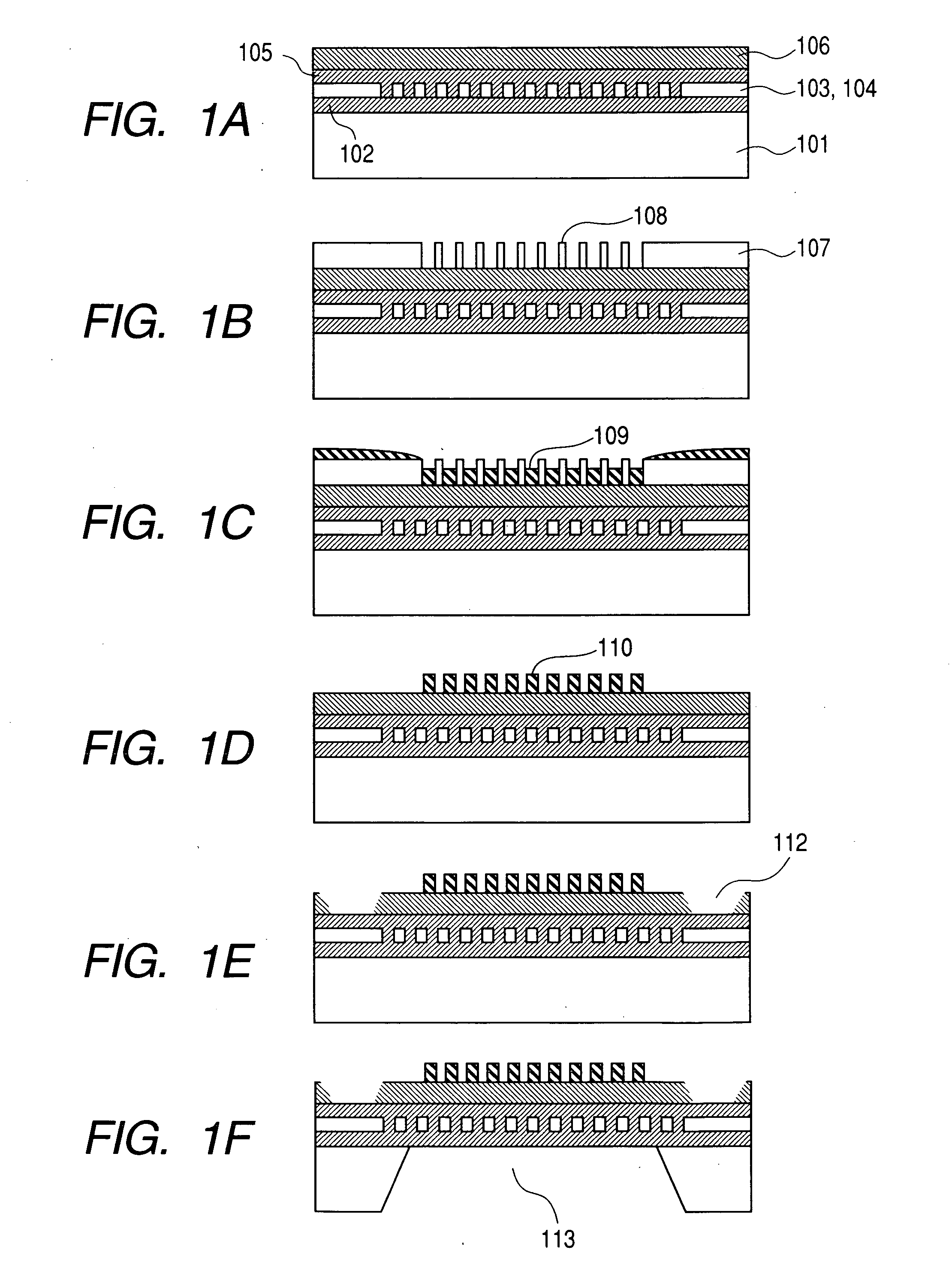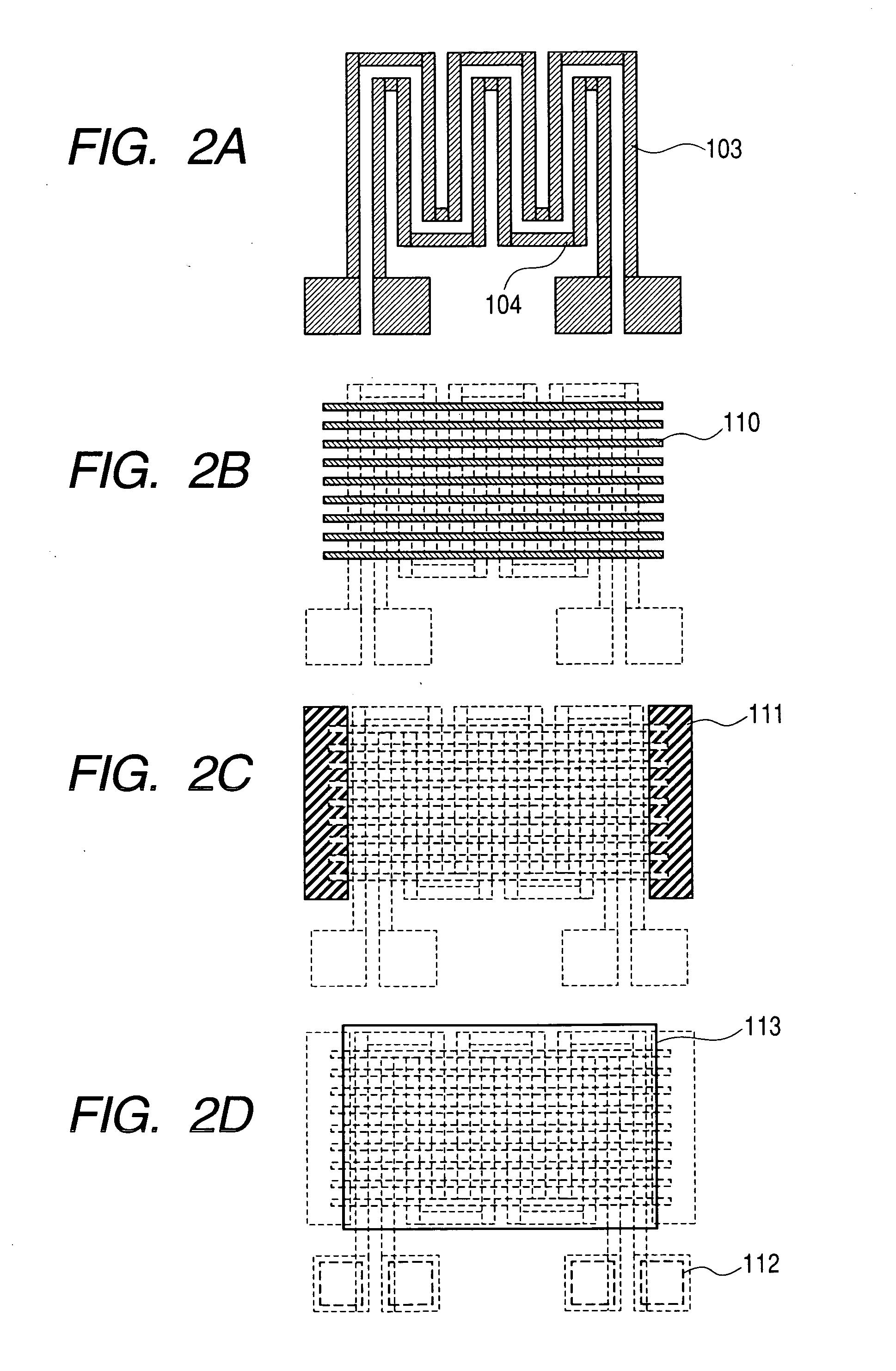Ceramic sensor and manufacturing method thereof
a technology of ceramic film and manufacturing method, which is applied in the field of gas sensor, can solve the problems of difficult integration of the above-mentioned si integrated circuit in the monolith, and the general difficulty of ceramic film processing, and achieve the effects of high sensitivity, high durability, and easy processing
- Summary
- Abstract
- Description
- Claims
- Application Information
AI Technical Summary
Benefits of technology
Problems solved by technology
Method used
Image
Examples
first embodiment
[0049]FIGS. 1A to 1F display schematic drawings illustrating a manufacturing process according to this embodiment using the cross-sections of the sensor. First of all, as shown in FIG. 1A, after a silicon oxide film 102 is formed on the surface of a Si substrate 101, for instance, by patterning a poly crystalline silicon thin film using a conventional lithography means with ultraviolet exposure through a mask, a heater circuit 103 and a temperature sensor circuit 104 are formed on the predetermined sensor area. Afterwards, the entire body mentioned above is coated with a Si oxide film 105 and Si nitride film 106.
[0050] Next, as shown in FIG. 1B, after a 150 nm thick Si oxide film 107 is deposited as a base film to form a ceramic pattern, a predetermined anti-reflection coating film and a resist film are coated, and a resist pattern having 60 nm of line-and-space is formed by exposing and developing it using ArF reduction projection exposure equipment with the numerical aperture of ...
second embodiment
[0074] Next, a method will be described for integrating in the monolith the sensor described in the first embodiment with an integrated circuit. FIGS. 7A to 7F are schematic drawings which illustrate a manufacturing process of an integrated gas sensor in which a sensor described in this embodiment and an integrated circuit are integrated in the monolith. First, as shown in FIG. 7A, an integrated circuit transistor 203 is fabricated by using a conventional CMOS integrated circuit process in a predetermined integrated circuit region 202 on the Si substrate 201. That is, a contact is formed, which consists of a well formation, an isolation by a field oxide film (a trench isolation may be acceptable), a gate oxide film, a gate, a source by a diffusion layer, a drain, and a high-melting point metallic plug. Moreover, herein, a first circuit may be formed to connect the integrated circuit transistor pair, if necessary.
[0075] On the other hand, in the predetermined sensor region 204 on th...
third embodiment
[0084] In an application of a gas sensor, operation for a long period of time without dependence on external energy is often required. For instance, it is necessary to operate it stably for several years using a dry battery. In this case, in addition to the stability of the sensor characteristics themselves, low power consumption is important. Since the power consumption of a ceramic gas sensor is controlled by the heater used to heat the sensor, two points are necessary to make it energy-saving, that is, (1) reducing the heat capacity of the heater and (2) reducing the thermal radiation from the heater portion. Although the priority of the above-mentioned (1) and (2) depends on the operation sequence of the sensor, both (1) and (2) can be achieved by making the heater smaller, in any case.
[0085] Concretely, it is necessary to reduce the volume of the heater, the surface area, the contact parts between the heater and the surrounding areas thereof. However, for this purpose, a surfa...
PUM
| Property | Measurement | Unit |
|---|---|---|
| width | aaaaa | aaaaa |
| thick | aaaaa | aaaaa |
| thick | aaaaa | aaaaa |
Abstract
Description
Claims
Application Information
 Login to View More
Login to View More - R&D
- Intellectual Property
- Life Sciences
- Materials
- Tech Scout
- Unparalleled Data Quality
- Higher Quality Content
- 60% Fewer Hallucinations
Browse by: Latest US Patents, China's latest patents, Technical Efficacy Thesaurus, Application Domain, Technology Topic, Popular Technical Reports.
© 2025 PatSnap. All rights reserved.Legal|Privacy policy|Modern Slavery Act Transparency Statement|Sitemap|About US| Contact US: help@patsnap.com



